Released on December 20, 2019
You have now two different columns for throughput, pace in the minutes fields manager:
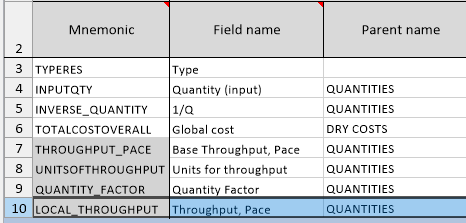
Their behavior is slightly different and both can be used separately or together.
They can also be used with the Quantity Factor column.
The initial column named THROUGHPUT_PACE is intended to attach a throughput to an article or a set, in the minutes or in the database of the estimate. This value is inherited so it cannot be typed in the hosting row (the row which consumes the article or the set from the database). We can say that this value is a property of the article or the set.
The new column named LOCAL_THROUGHPUT can be typed only on hosting or orphan rows and comes as a deviation if you also have the THROUGHPUT_PACE column implemented. Let’s say you have a bulldozer which is able to do 100m3 per hour so the regular THROUGHPUT_PACE, in the database of the estimate will be 100. Now you want to consume this article or set in the minute or in another set of the database of the estimate but you think it’s easier and your machine could do more. You could input 150 for 150m3 per hour in the column LOCAL_THROUGHPUT at the location where the article or set is consumed. 150 will then replace 100 in this local calculation.
Notice that you could also use the column QUANTITY_FACTOR and enter 0.75 to achieve the same operation.
For simple implementations, LOCAL_THROUGHPUT can be used alone. Its default value being 1, it has no effect if you input no value. When you input a value, it calculates the quantity.
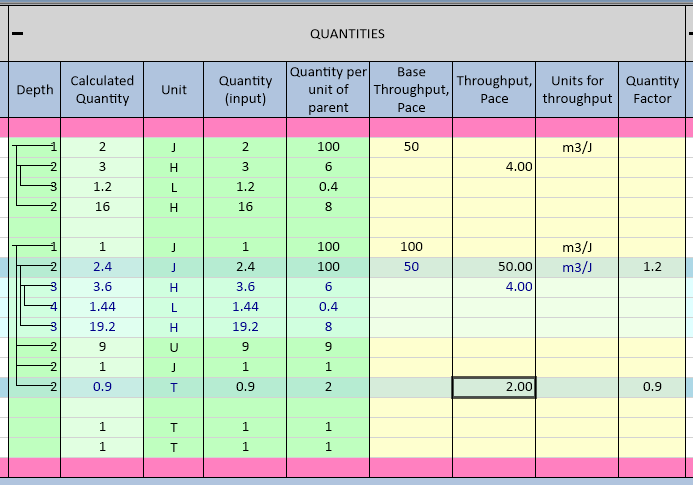
The new column LOCAL_THROUGHPUT, as QUANTITY_FACTOR is compatible with all other columns, including FORMULA_FOR_QUANTITY.
Check our sample Sample_With_Inheritance_Of_Throughput_Pace.qdv
There’s a new setting “Allow editing analytical reports and data sources” in the user profile.

When it is disabled, the user cannot access some functionality for analytical reporting:
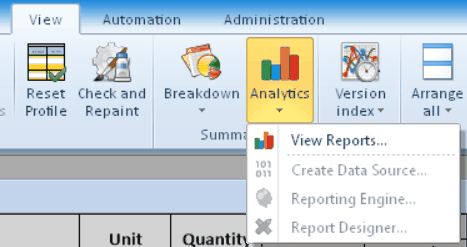
When using Parent/Slave lists and when there is only 1 possible entry for the slave list when editing the parent list entry, then this unique entry for the slave list is automatically inserted.
The overhead minute which recently is presented in a separate tab has now also a tree to the left.
In the tree (1 level only) the group headers are presented.
Example:
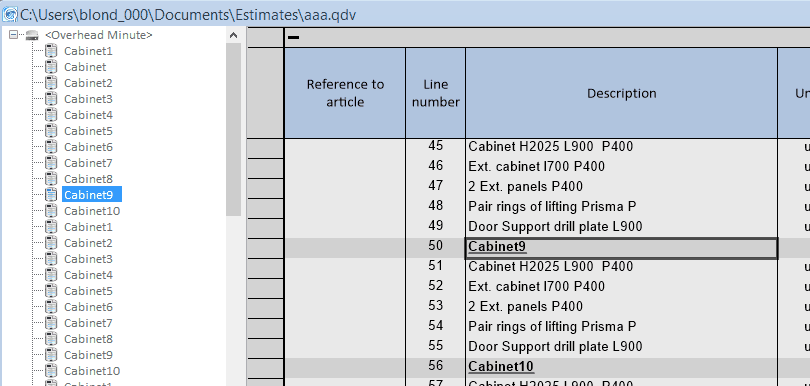
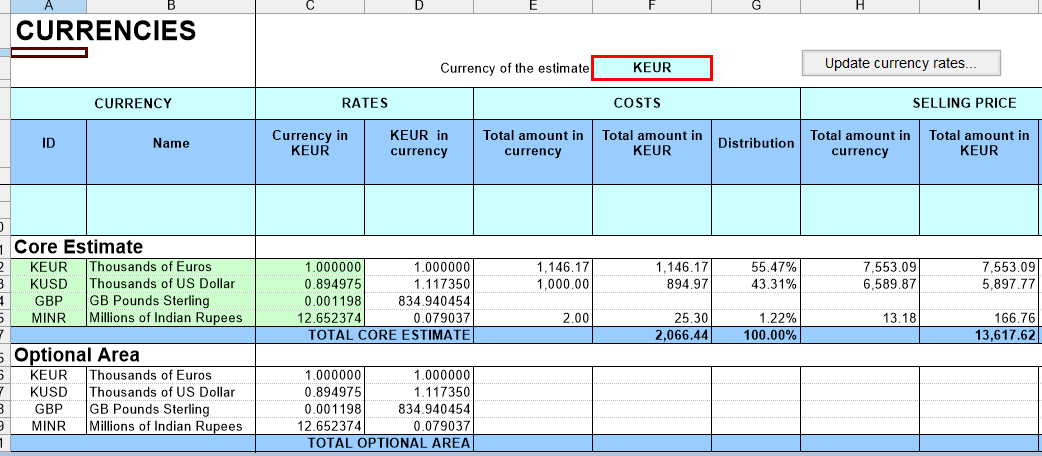
When you update currency rates by either clicking the “Update Currency Rates” button or using the API, you can now have currency names with a leading K (x1000) or a leading M (x1000000). QDV expects ISO currency codes (3 letters) or any ISO currency code preceded by K or M (4 letters). Any other combination will lead to an error message.
The master currency also can have a leading K or a leading M.
During ‘Check only’ and ‘Check and Build’ values in mapped WBS fields are checked only when there is X in Levels 1-7 and values in mapped Minute field are checked only when there is X in Minutes column.
This allows to ignore values/rows with normally invalid values for rows which aren’t WBS branches/tasks or Minutes. However at this moment it creates inconsistency with validation during e.g. ‘Auto Levels’ because auto leveling uses only valid rows and validation is done here without taking structure into account so row can reported as invalid as so far while with existing structure Check only reported before invalid row now it will pass.
There rows were before reported in ‘Check only’ as invalid, now they are allowed:

When using .grp file as ‘Source Database’ article field and also with ‘Fill list of articles’ function (prompt = Yes), article descriptions were updated from source database but Set description was erased. It is now kept from Excel file.
In some cases with first row having e.g. Text format in Excel, the text written in formula row in Converter, with inherited format Text, e.g. =1 wasn’t considered a formula and not applied to whole column. Inserted header rows and columns are now set always to General format so formula is properly applied.